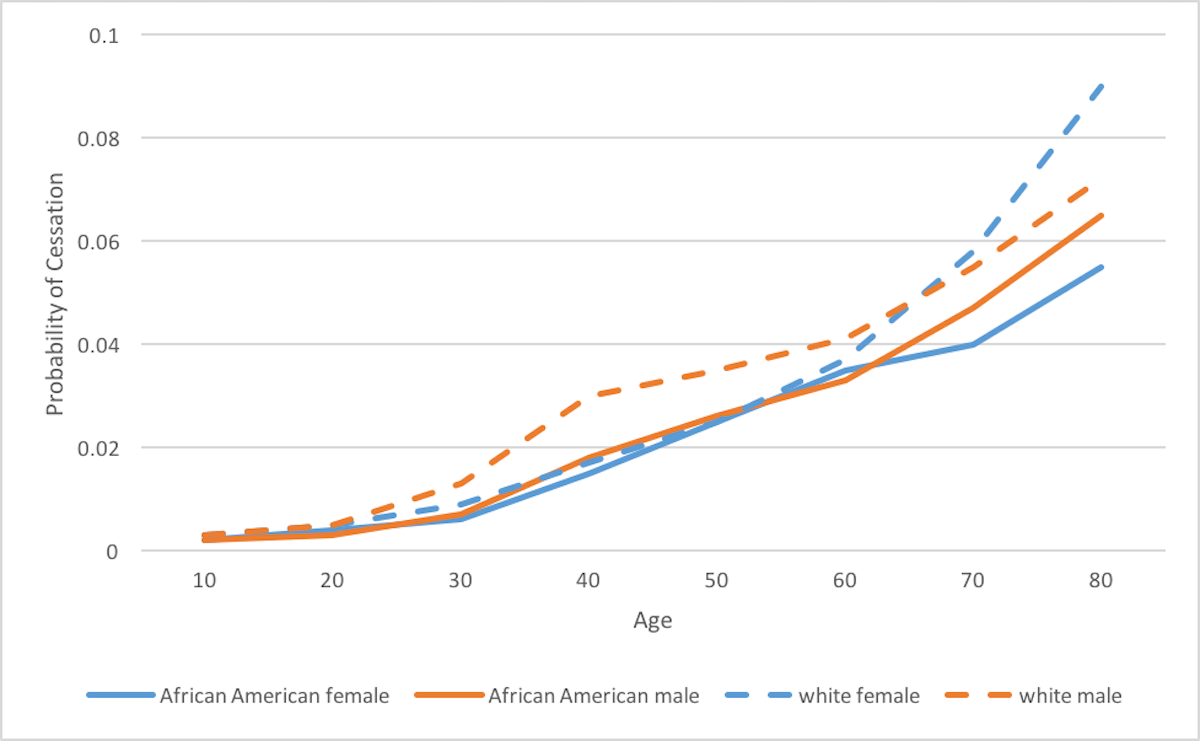ASHES, Vol. 12(5) – Less likely to start but less likely to quit: Racial differences in smoking cessation
Cigarette smoking has been a leading cause of preventable deaths in the United States for a long time. However, certain health complications linked to smoking show up more in certain population groups than others. For example, when it comes to lung cancer, African American males are at much higher risk than white males, but African American females are at lower risk than white females. As part of our Special Series on Disparities in the Experience and Treatment of Addiction, this week’s ASHES examines a study by Theodore Holford and colleagues comparing smoking history patterns between African American and white adults.
What was the research question?
Is there a difference in the level of lifetime cigarette smoking exposure between African American and white adults?
What did the researchers do?
The researchers used cross-sectional US National Health Interview Survey data collected from 1965-2012 to compare lifetime smoking histories of African American and white respondents.
What did they find?
The researchers found that African Americans reported smoking fewer cigarettes per day than white respondents and were less likely to start smoking than whites. However, as the Figure shows, they also found that African Americans were less likely to quit smoking than whites, and African American men had a longer duration of smoking by the time they reached older age, when health complications generally appear. The researchers cite other studies suggesting that duration is more strongly associated with lung cancer mortality than smoking intensity (e.g., number of cigarettes smoked per day).

Figure. Smoking cessation probabilities across the lifespan among white and African American men and women born in 1930. Adapted from Holford et al., 2016. Click image to enlarge.
Why do these findings matter?
In 1964, then-Surgeon General Luther Terry released the first government report linking smoking and illness. Over the next 50 years, thanks to greater public understanding about the risks of smoking, the rate of smoking in the U.S. dropped by more than half. Now, researchers and policy makers need to focus on segments of the community that are especially at risk for smoking and its health consequences. This study is helpful because it suggests that lower cessation rates and longer duration, in particular, might be responsible for higher rates of smoking-related conditions among African American men.
The good news is that culturally targeted programs might help reduce risk. For example, Alicia Matthews and her colleagues describe a smoking cessation program targeted to African American smokers in Chicago. This program emphasized several culturally relevant topics, such as tobacco companies’ long history of strategic marketing to African Americans, including kids, and positive messages about the health and financial benefits of quitting. Health workers developed partnerships with local schools and community-based health centers to recruit participants and run a pilot test of this program. Results were promising: participants had higher quit rates compared with the standard approach.
Every study has limitations. What were the limitations in this study?
This study did not look at factors that could account for racial differences in smoking-related health problems, such as genetics or the environment. Also, this study does not connect racial differences in smoking duration and intensity to smoking-related deaths, but the authors plan to take this step in future research.
For more information:
Visit SmokeFree.gov for a variety of resources to help you stop smoking. For additional tools, please visit the BASIS Addiction Resources page.
— Emily Shoov
What do you think? Please use the comment link below to provide feedback on this article.